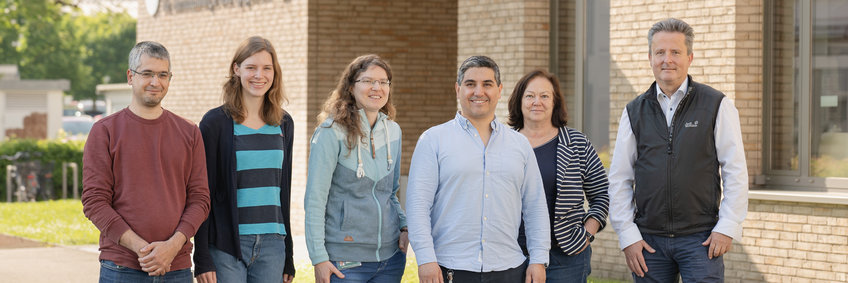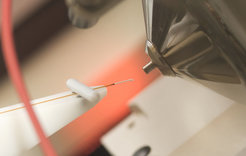
Proteomics Facility
We provide a complete mass-spectrometry (MS) based bottom-up proteomics infrastructure for the identification and characterization of proteins as well as for the elucidation of their molecular sociology. This includes state-of-the-art nLC-MS/MS experiments employing various data acquisition strategies. We strive to serve all internal investigators by providing both access to proteomics technologies and consultancy advice for running proteomics projects.

Proteins are a key building block of all living organisms and represent the communication hub in the crosstalk between small molecules (metabolites), extra- and intracellular signals as well as the flow of genetic information (from the genome to RNAs). Hence, together with DNA modifications and non-coding RNA, proteins (and their PTMs) constitute pivotal molecular players in cellular physiology and epigenetic regulation. As a consequence, systematic protein profiling is vital to study cellular homeostasis under regular and disease conditions.
The unit offers a state-of-the-art biomolecular mass spectrometry (MS) analysis service and collaborates with internal research groups in order to develop custom-tailored protein-protein and protein-nucleic acid complex purification and MS analyses strategies to address important biological questions. Our equipment allows us to employ state-of-the-art MS/MS identification and PTM analysis of proteins, enabling the in depth characterization of proteins and protein complexes. Recently, we added targeted MS (PRM: Parallel Reaction Monitoring) as an hypothesis driven proteomics approach offering routine sub-femtomol sensitivity as well as next-generation proteomics via DIA/HRM (Data Independent Acquisition/Hyper Reaction Monitoring) to our portfolio.
Workflow
In the facility, sample processing often starts with tissue/cell lysis, fractionation, digestion of the proteins with site-specific endoproteinases (like trypsin), and peptide cleanup (to remove molecules that interfere with ionization, like detergents, plasticizers, salts). The resulting purified peptide mixture is separated online by C18 reversed-phase chromatography interfaced to a mass spectrometer using nano-UHPLC systems. As the peptides elute from the column, they are ionized by electrospray ionization (ESI) and detected by MS. In the standard data-dependent acquisition (DDA) mode, masses (more precise mass-to-charge values) of intact peptides are detected by MS survey scans, which are followed by peptide fragmentation (MS/MS) to determine the sequence and post-translational modifications of the peptides (in the resulting MS/MS spectral scans).
The unit is very experienced in metabolic labelling of cells (by SILAC), which is the cornerstone for isotope-based quantitative proteomic analyses at the MS1 (survey scan) level. Quantification by isotope-labeled spike-in peptides can also be achieved. TMT labeling as an alternative isotope-based MS/MS quantification workflow, which can be highly multiplexed is currently established. Alternative quantitative approaches are label-free quantification (LFQ) that depend on the sophisticated non-linear alignment of subsequent LC-MS runs.
Selected Publications
Immunity 53(6), 1151-1167.e6
Find more publications of Gerhard Mittler and his team on PubMed or in the MPG Publication Repository.
